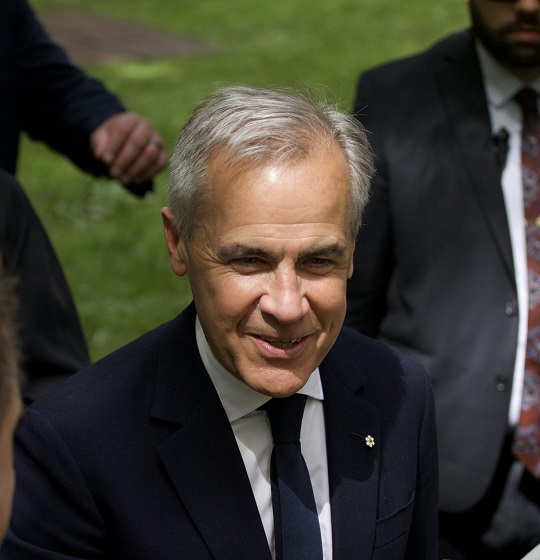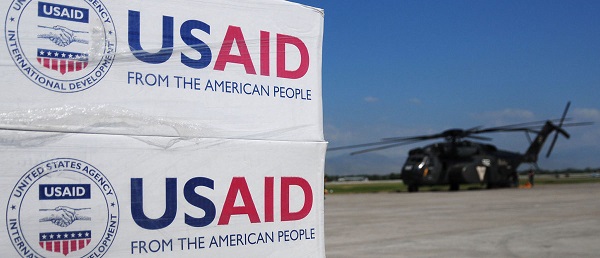Economy
Government services faltering despite Ottawa’s tax hikes

From the Fraser Institute
By Matthew Lau
Compare this growth of almost 50 per cent to the growth rate of private-sector employment—from 2015 to 2023, combined growth for the private sector and self-employment was about 11 per cent.
According to a study published by the Fraser Institute, 44.6 per cent of the average family’s income will be consumed by taxes of all kinds in 2024. Thus June 13—which is 44.6 per cent of the way through the year—was “Tax Freedom Day.” In other words, on average, the work done and income earned from January 1 to June 12 is consumed by government. This tax bill, most Canadians believe, is too high, but alas a tax-happy federal government is unlikely to provide relief.
Indeed, the Trudeau government recently made another effort to push Tax Freedom Day further back into the year with its increase to capital gains taxes, adding to its long record of tax increases since coming to office in 2015. The list of tax hikes includes a new top income tax bracket in 2016, the carbon tax first imposed in 2019 and increased every year since, five consecutive annual Canada Pension Plan tax hikes from 2020 to 2024, special taxation of financial institutions imposed in 2022, continued threats of special taxation of grocery stores, and announced plans for a tax on share buybacks.
With such enthusiasm for tax hikes, it cannot be a surprise that since the Trudeau government took office in 2015, the number of employees at the Canada Revenue Agency increased from around 40,000 to almost 60,000 by 2023. Compare this growth of almost 50 per cent to the growth rate of private-sector employment—from 2015 to 2023, combined growth for the private sector and self-employment was about 11 per cent.
But alas, all these new taxes and government growth have not yielded positive results. From the third quarter of 2015 to the first quarter of 2024, growth in real GDP per-person (a common indicator of living standards) was less than 1 per cent cumulatively versus nearly 16 per cent in the United States. The productivity improvements that deliver sustainable economic growth rely on business investment, but that has badly stalled in Canada, too. Since the third quarter of 2015, real business investment in machinery, equipment and non-residential structures is down about 19 per cent on a per-person basis.
Nor have Canadians received improved government services as a result of higher taxes.
Health access is getting worse, with wait times for medical care continuing to increase. And even the Liberals have effectively admitted their national child-care program, which they began implementing in 2021, has created widespread shortages.
Similarly, on two core federal government functions—public safety and national defence—even as Canadians pay new and higher taxes, outcomes are dismal. Crime is rising and Canada’s military readiness is “dangerously inefficient.” In fact, at the end of last year the commander of the Royal Canadian Navy said it “faces some very serious challenges right now that could mean we fail to meet our force posture and readiness commitments in 2024 and beyond” and that “the air force and the army are facing similar challenges.”
And Canada’s passport offices continue to be in a state of disarray and the federal government has missed its own deadline for allowing Canadians to renew passports online.
Polling data show Canadians believe they pay too much tax. No one should be surprised. The Trudeau government’s new and higher taxes have contributed significantly to the country’s stagnating economy and declining business confidence, and have been accompanied by deteriorating government services across the board. Raising taxes won’t make things any better. Cutting taxes would.
Author:
Automotive
Federal government should swiftly axe foolish EV mandate

From the Fraser Institute
Two recent events exemplify the fundamental irrationality that is Canada’s electric vehicle (EV) policy.
First, the Carney government re-committed to Justin Trudeau’s EV transition mandate that by 2035 all (that’s 100 per cent) of new car sales in Canada consist of “zero emission vehicles” including battery EVs, plug-in hybrid EVs and fuel-cell powered vehicles (which are virtually non-existent in today’s market). This policy has been a foolish idea since inception. The mass of car-buyers in Canada showed little desire to buy them in 2022, when the government announced the plan, and they still don’t want them.
Second, President Trump’s “Big Beautiful” budget bill has slashed taxpayer subsidies for buying new and used EVs, ended federal support for EV charging stations, and limited the ability of states to use fuel standards to force EVs onto the sales lot. Of course, Canada should not craft policy to simply match U.S. policy, but in light of policy changes south of the border Canadian policymakers would be wise to give their own EV policies a rethink.
And in this case, a rethink—that is, scrapping Ottawa’s mandate—would only benefit most Canadians. Indeed, most Canadians disapprove of the mandate; most do not want to buy EVs; most can’t afford to buy EVs (which are more expensive than traditional internal combustion vehicles and more expensive to insure and repair); and if they do manage to swing the cost of an EV, most will likely find it difficult to find public charging stations.
Also, consider this. Globally, the mining sector likely lacks the ability to keep up with the supply of metals needed to produce EVs and satisfy government mandates like we have in Canada, potentially further driving up production costs and ultimately sticker prices.
Finally, if you’re worried about losing the climate and environmental benefits of an EV transition, you should, well, not worry that much. The benefits of vehicle electrification for climate/environmental risk reduction have been oversold. In some circumstances EVs can help reduce GHG emissions—in others, they can make them worse. It depends on the fuel used to generate electricity used to charge them. And EVs have environmental negatives of their own—their fancy tires cause a lot of fine particulate pollution, one of the more harmful types of air pollution that can affect our health. And when they burst into flames (which they do with disturbing regularity) they spew toxic metals and plastics into the air with abandon.
So, to sum up in point form. Prime Minister Carney’s government has re-upped its commitment to the Trudeau-era 2035 EV mandate even while Canadians have shown for years that most don’t want to buy them. EVs don’t provide meaningful environmental benefits. They represent the worst of public policy (picking winning or losing technologies in mass markets). They are unjust (tax-robbing people who can’t afford them to subsidize those who can). And taxpayer-funded “investments” in EVs and EV-battery technology will likely be wasted in light of the diminishing U.S. market for Canadian EV tech.
If ever there was a policy so justifiably axed on its failed merits, it’s Ottawa’s EV mandate. Hopefully, the pragmatists we’ve heard much about since Carney’s election victory will acknowledge EV reality.
Economy
The stars are aligning for a new pipeline to the West Coast

From Resource Works
Mark Carney says another pipeline is “highly likely”, and that welcome news.
While attending this year’s Calgary Stampede, Prime Minister Mark Carney made it official that a new pipeline to Canada’s West Coast is “highly likely.”
While far from a guarantee, it is still great news for Canada and our energy industry. After years of projects being put on hold or cancelled, things are coming together at the perfect time for truly nation-building enterprises.
Carney’s comments at Stampede have been preceded by a number of other promising signs.
At a June meeting between Carney and the premiers in Saskatoon, Alberta Premier Danielle Smith proposed a “grand bargain” that would include a privately funded pipeline capable of moving a million barrels of oil a day, along with significant green investments.
Carney agreed with Smith’s plan, saying that Canada needed to balance economic growth with environmental responsibility.
Business and political leaders have been mostly united in calling for the federal government to speed up the building of pipelines, for economic and strategic reasons. As we know, it is very difficult to find consensus in Canada, with British Columbia Premier David Eby still reluctant to commit to another pipeline on the coast of the province.
Alberta has been actively encouraging support from the private sector to fund a new pipeline that would fulfil the goals of the Northern Gateway project, a pipeline proposed in 2008 but snuffed out by a hail of regulations under former Prime Minister Justin Trudeau.
We are in a new era, however, and we at Resource Works remarked that last month’s G7 meeting in Kananaskis could prove to be a pivotal moment in the history of Canadian energy. An Ipsos poll found that Canada was the most favoured nation for supplying oil in the G7, and our potential as an energy superpower has never been more important for the democratic world, given the instability caused by Russia and other autocratic energy powers.
Because of this shifting, uncertain global climate, Canadian oil and gas are more attractive than ever, and diversifying our exports beyond the United States has become a necessity in the wake of Donald Trump’s regime of tariffs on Canada and other friendly countries.
It has jolted Canadian political leaders into action, and the premiers are all on board with strengthening our economic independence and trade diversification, even if not all agree on what that should look like.
Two premiers who have found common ground are Danielle Smith and Ontario Premier Doug Ford. After meeting at Stampede, the pair signed two memorandums of understanding to collaborate on studying an energy corridor and other infrastructure to boost interprovincial trade. This included the possibility of an eastward-bound pipeline to Ontario ports for shipping abroad.
Ford explicitly said that “the days of relying on the United States 100 percent, those days are over.” That’s in line with Alberta’s push for new pipeline routes, especially to northwestern B.C., which are supported by Smith’s government.
On June 10, Resource Works founder and CEO Stewart Muir wrote that Canadian energy projects are a daunting endeavour, akin to a complicated jigsaw puzzle, but that getting discouraged by the complexity causes us to lose sight of the picture itself. He asserted that Canadians have to accept that messiness, not avoid it.
Prime Minister Carney has suggested he will make adjustments to existing regulations and controversial legislation like Bill C-69 and the emissions cap, all of which have slowed the development of new energy infrastructure.
This moment of alignment between Ottawa, the provinces, and other stakeholders cannot be wasted. The stars are aligning, and it will be a tragedy if we cannot take a great step into the future of our country.
-

 MAiD2 days ago
MAiD2 days agoCanada’s euthanasia regime is already killing the disabled. It’s about to get worse
-

 Daily Caller16 hours ago
Daily Caller16 hours agoUSAID Quietly Sent Thousands Of Viruses To Chinese Military-Linked Biolab
-

 Alberta13 hours ago
Alberta13 hours ago‘Far too serious for such uninformed, careless journalism’: Complaint filed against Globe and Mail article challenging Alberta’s gender surgery law
-

 Censorship Industrial Complex24 hours ago
Censorship Industrial Complex24 hours agoCanadian pro-freedom group sounds alarm over Liberal plans to revive internet censorship bill
-

 Fraser Institute1 day ago
Fraser Institute1 day agoBefore Trudeau average annual immigration was 617,800. Under Trudeau number skyrocketted to 1.4 million from 2016 to 2024
-

 International2 days ago
International2 days agoChicago suburb purchases childhood home of Pope Leo XIV
-

 Daily Caller2 days ago
Daily Caller2 days ago‘I Know How These People Operate’: Fmr CIA Officer Calls BS On FBI’s New Epstein Intel
-

 Economy1 day ago
Economy1 day agoThe stars are aligning for a new pipeline to the West Coast



